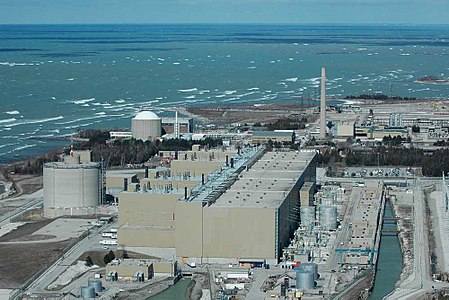List of largest power stations in Canada
Commons category link is locally definedGeographic coordinate listsLists of coordinatesLists of power stations by countryLists of power stations in Canada ... and 1 more
Lists related to renewable energy

This article lists the largest electrical generating stations in Canada in terms of current installed electrical capacity. Non-renewable power stations are those that run on coal, fuel oils, nuclear, natural gas, oil shale and peat, while renewable power stations run on fuel sources such as biomass, geothermal heat, hydro, solar energy, solar heat, tides, waves and the wind. As of 2022 the largest power generating facility is the Bruce Nuclear Generating Station in Ontario and has an installed capacity of 6,430 MW.
Excerpt from the Wikipedia article List of largest power stations in Canada (License: CC BY-SA 3.0, Authors, Images).List of largest power stations in Canada
Unwin Avenue, Toronto
Geographical coordinates (GPS) Address Nearby Places Show on map
Geographical coordinates (GPS)
| Latitude | Longitude |
|---|---|
| N 43.6455 ° | E -79.335083333333 ° |
Address
Richard L. Hearn Thermal Generating Station (closed)
Unwin Avenue
M5A 1A1 Toronto
Ontario, Canada
Open on Google Maps








